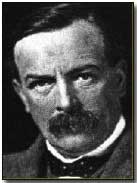Encyclopedia - The Supreme War Council
 Determined to reign in the
influence of
Sir William Robertson and
Sir Douglas Haig
- the Chief of the Imperial General Staff and Commander-in-Chief
respectively - British Prime Minister
David Lloyd
George advocated the creation of the Supreme War Council in the autumn
of 1917.
Determined to reign in the
influence of
Sir William Robertson and
Sir Douglas Haig
- the Chief of the Imperial General Staff and Commander-in-Chief
respectively - British Prime Minister
David Lloyd
George advocated the creation of the Supreme War Council in the autumn
of 1917.
Lloyd George had long formed a mistrust (bordering on detestation) of both Haig and his prime supporter in London, developing grave reservations concerning their military strategy which grew in the wake of successive debacles at the Somme from July 1916 and at Passchendaele from late July 1917.
Thus in the aftermath of Italy's disastrous performance at the Battle of Caporetto in October 1917 - in which the Austro-Hungarians and Germans surprised and effectively demolished Italian forces on the Isonzo - Lloyd George seized his opportunity.
At the Rapallo Conference of 5-7 November 1917 he proposed the establishment of the Supreme War Council (based at Versailles) intended as a co-ordinated Allied effort to oversee military strategy, initially directed at Italy, with a leading military figure from each Allied nation appointed to sit on the council. He believed that this would act to isolate both Robertson and Haig and consequently reduce their authority.
The net result of the initiative produced results for both Lloyd George and French Premier Georges Clemenceau, who used the council to assist French appointee Ferdinand Foch in overruling the defensive strategies of French Commander-in-Chief Henri-Philippe Petain.
Although the council was rendered ineffective during the great German Spring offensive of March 1918 and in the aftermath of Foch's appointment as Allied supreme commander (the latter actually supported by Haig who also saw such a move as a means of circumventing the 'defeatist' Petain), it did bring about the resignation of Robertson, who protested (as did many senior military figures) at what he viewed as decision by committee, particularly given the appointment of Sir Henry Wilson as Britain's representative on the council in his own place.
Thus Robertson was replaced as Chief of the Imperial General Staff by Wilson in February 1918, Wilson having connived with Lloyd George to bring about the former's downfall; Haig nevertheless remained as Commander-in-Chief until the close of the war.
The council's initial representatives saw Foch accept the presidency of the council (with Maxime Weygand the official French representative), Wilson for Britain, Luigi Cadorna for Italy and Tasker Bliss for the U.S.A. In the event the council served as a means of discussing at an early stage potential armistice terms and peace treaty settlement conditions.
Around one million Indian troops served in WW1, of which some 100,000 were either killed or wounded.
- Did you know?
